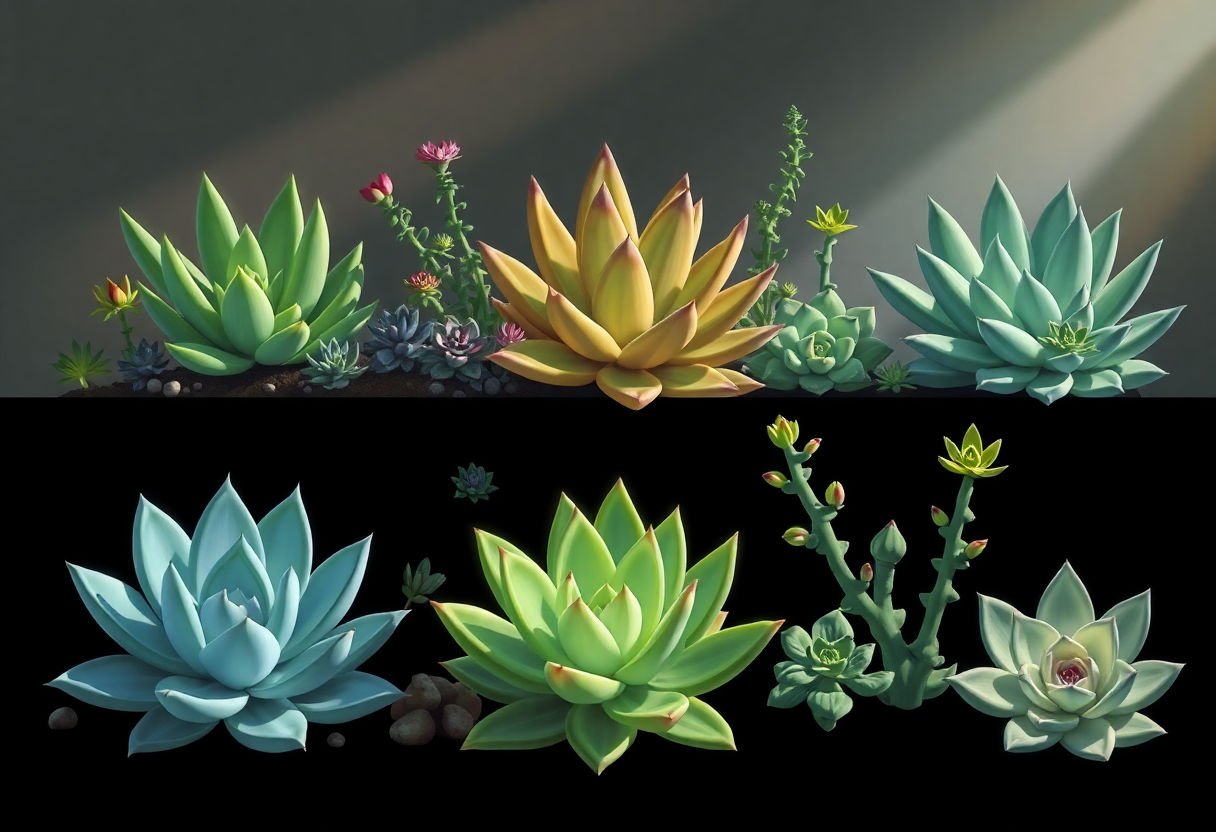Succulents come in many varieties. These plants have unique needs, especially when it comes to light. Some love bright, sunny spots. Others prefer low light where the sun doesn’t reach as much. Knowing the light needs of your succulents can make them happier and healthier. This guide will help you understand these needs. You’ll learn about succulents that like high light and those that thrive in low light. Tips on using artificial light and spotting unhealthy plants are also included. Whether for indoor spaces or outside gardens, this article will help you care for your succulents.
Key Takeaways
- Succulents require different amounts of light, with some needing bright sun and others thriving in low light.
- Adapting light conditions improves succulent health and growth.
- Artificial lighting can help succulents grow where natural sunlight is limited.
- Knowing when succulents are getting too little or too much light helps prevent growth issues.
Understanding Light Needs of Common Succulents
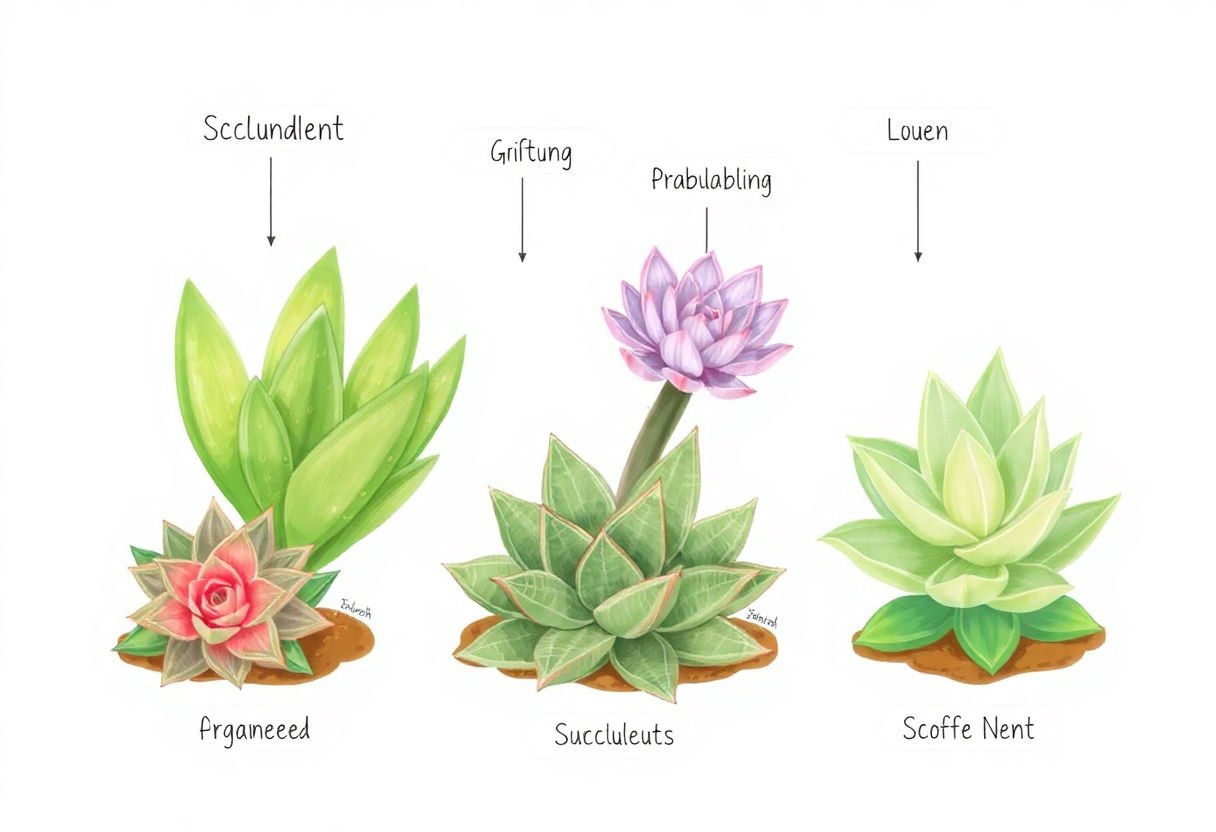
Understanding the light needs of succulents helps them thrive. Some common succulents like Aloe Vera, Jade Plant, and Echeveria need plenty of sunlight. Bright light makes their leaves strong and helps them grow. Think of sunlight as the fuel that keeps their engines running smoothly.
- Aloe Vera: Loves bright, indirect sunlight. Too much direct sun can scorch it.
- Jade Plant: Enjoys several hours of direct sun. A spot near a south-facing window works well.
- Echeveria: Needs bright light all day. Direct morning sun is ideal.
Not all succulents want a sunbath. Some prefer a shadier spot to take a nap. Snake Plant and Zebra Haworthia can grow fine with less light. They can survive in an office or anywhere with low light.
- Snake Plant: Tolerates lower light. Does not need direct sun.
- Zebra Haworthia: Enjoys indirect light. Can handle low light, but grows better with some sun.
Letting your succulents get used to new light slowly can prevent stress. If you move them to a new spot, give them time to adjust. Rotating your pot can give all sides a chance to soak up the sun evenly and help the plant grow straight and strong.
Pay attention to your succulents and their light needs. The right amount of light keeps them happy and healthy, letting them put on a colorful show in any room.
High Light Succulents and Their Requirements
Succulents that love bright, direct sunlight often come from hot, coastal areas like Mexico or South Africa. They thrive in full sun and need it to grow well. Think of them as sunbathers. Without enough sun, they lose their vibrancy and can become leggy.
Examples of these succulents include:
- Echeveria: Known for its rose-like shape. Needs at least six hours of sun.
- Jade Plants (Crassula ovata): Prefer bright light. Watch for their leaves getting red edges under full sun.
- Agave: Loves bright spots. Ideal for gardens with lots of sunlight.
When caring for these plants, remember:
-
Sunlight Levels: Put them in south-facing windows where they get direct sunlight for the longest time during the day.
-
Warning Signs: If a succulent stretches, or its leaves become pale, it may not be getting enough light.
-
Outdoor Placement: If planting outside, make sure they are in spots that catch full sun for most of the day.
Watering needs differ too. They may need more water under full sun since the soil dries faster. Always check the soil before watering. If it feels dry two inches down, it’s time to water.
These succulents bring beauty and interest with their varied shapes and color patterns. Just give them plenty of light, and they will flourish, adding a quirky touch to any space.
Popular Low Light Succulent Varieties
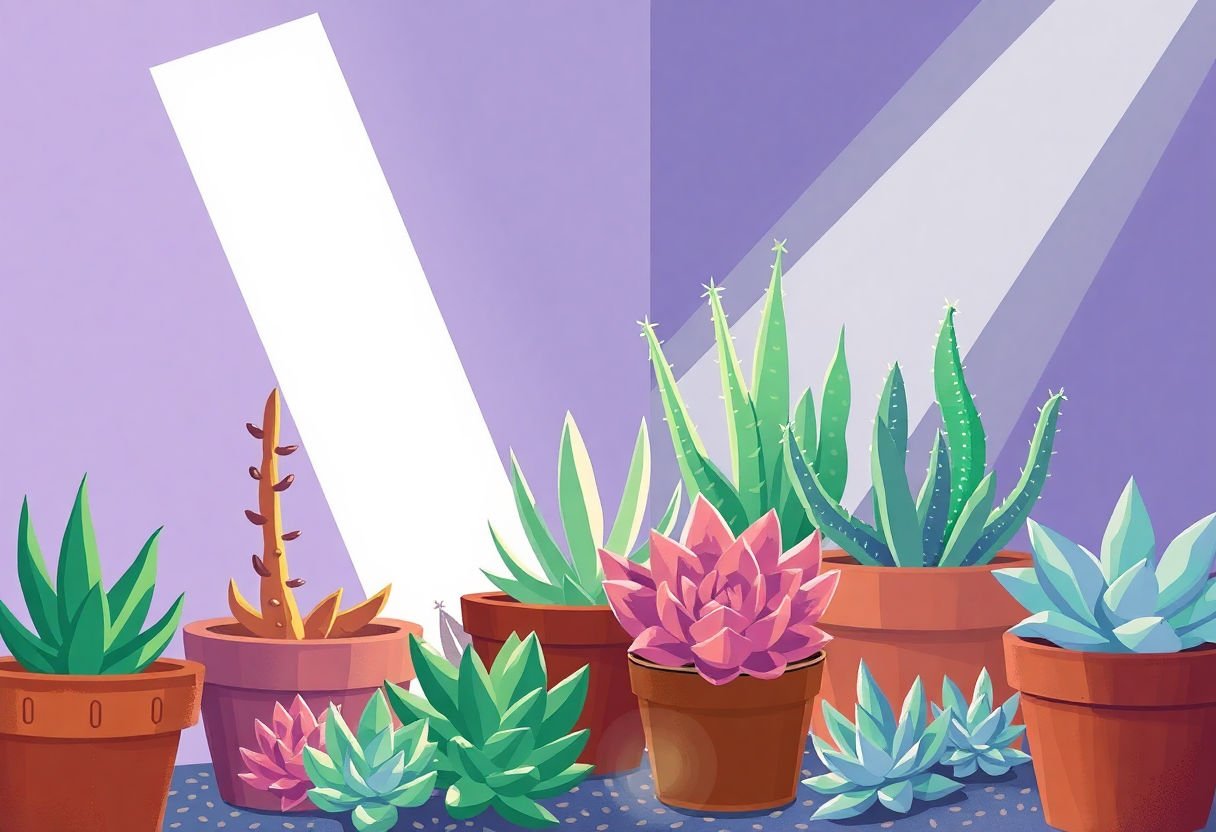
Low light succulent varieties offer great options for people who don’t have a lot of natural sunlight. These plants are tough and can survive with little light. A few varieties stand out as popular choices for indoor settings.
The Snake Plant is one of the top picks. It has long, upright leaves with a striking design. This plant can survive in very dim corners, making it perfect for homes without much sunlight. Plus, it cleans the air, which adds freshness to your space.
Another great option is the ZZ Plant. It has shiny, dark green leaves and needs very little care. You can leave it in a hallway or a room with little light. This plant requires minimal watering. This makes it easy to look after, even for beginners.
The Panda Plant is quite unique. It has fuzzy, gray-green leaves edged with brown. The plant adds a touch of texture to any space. While it prefers some sunlight, it can thrive in low light areas too. It just needs occasional watering.
If space is limited, consider the compact Jade Plant. Its thick, round leaves add a splash of green to any room. Though slow-growing, the Jade Plant’s needs are minimal, making it a wonderful choice for small apartments.
Choosing the right succulent varieties for different light conditions ensures a vibrant and healthy collection in any home setting.
Adjusting Light Conditions for Your Succulent Collection
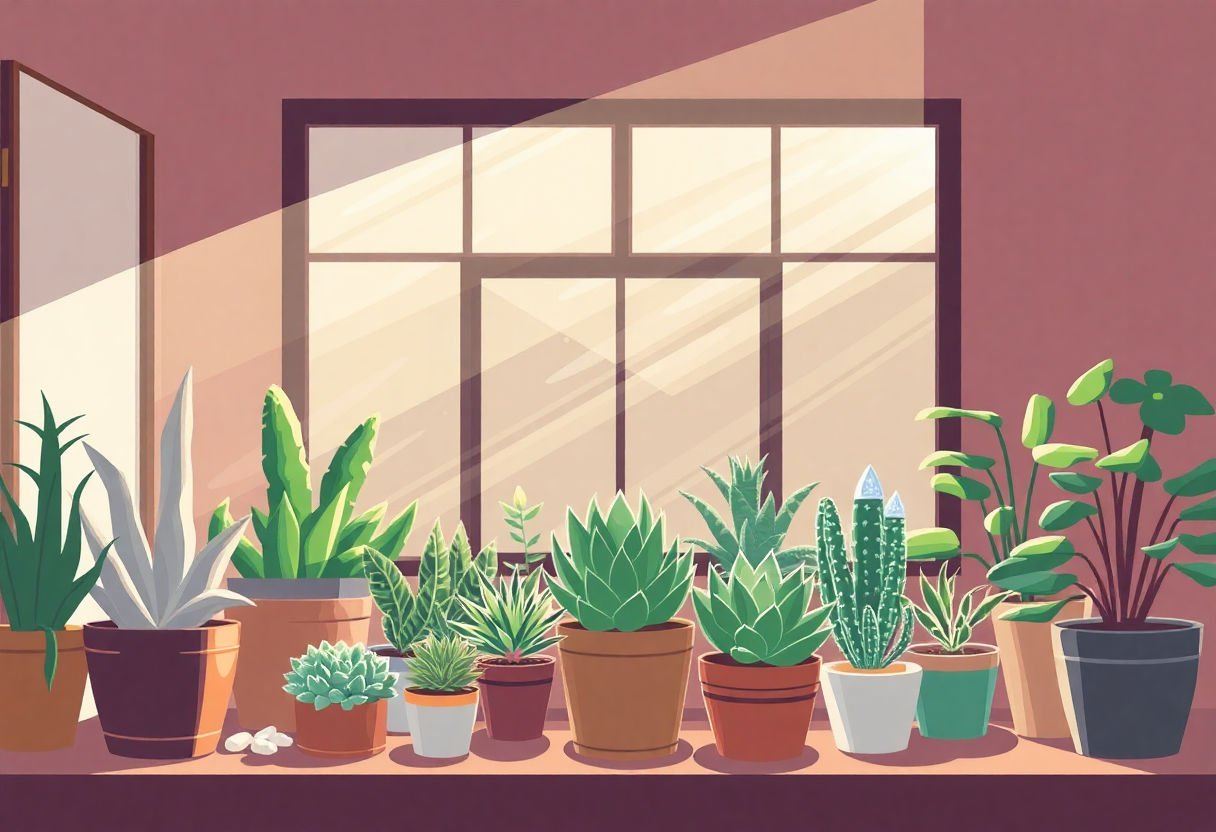
Succulents love bright spots, but each species has its own light needs. Adjusting light conditions can help your succulents thrive. Let’s explore some steps to get the light just right.
Start with Observation
Watch your plants. Do they look happy, or are they stretching? Stretching means they need more light. Leaves might pale or colors might fade if there’s not enough light.
Use Natural Light Wisely
Find a sunny window. South-facing windows work great for high-light succulents like Echeveria or Aloe. Avoid too much direct afternoon sun, which can burn leaves. A sheer curtain can help filter light.
Move Plants When Needed
Rotate plants every few weeks. Turning them helps with even light distribution. If a plant looks one-sided or lopsided, give it a turn.
Be Mindful of Seasons
Sunlight changes through the seasons. During winter, light intensity drops. Move succulents closer to light sources. In summer, watch for burning from harsh sun.
Tips for Indoor Spaces with Low Light
- Opt for plants like Jade or Haworthia.
- Use mirrors to reflect light towards plants.
- If windows don’t provide enough light, consider this tip.
Artificial Light Options
Try full-spectrum LED grow lights. Position them 6-12 inches above the plant. Follow the manufacturer’s instructions on usage time.
By adjusting light conditions, you can keep your succulents happy and healthy. Each plant will have its own needs. Adjustments and care will help them flourish in your space.
Impact of Artificial Lighting on Succulent Growth

Indoor gardeners often face the challenge of providing enough light for succulents. Artificial lighting comes in handy, especially where sunlight falls short. This is like bringing the sun indoors for your plants.
Grow lights are popular for providing the extra light succulents need. These lights mimic sunlight, helping plants grow healthy. They work well in places with little natural light. A mix of blue and red lights usually benefits succulents the most. Blue light supports leaf growth, while red light helps flowering.
Setting up the right light is key. Here’s a simple guide:
- Distance: Position lights 6 to 12 inches above the plants.
- Duration: Keep lights on for 12 to 14 hours a day.
- Schedule: Use a timer to maintain a consistent light cycle.
Some may wonder if regular lamps can work. While they can add some light, they lack the full spectrum that plants need. It’s like feeding your pet but missing nutrients. Full-spectrum grow lights do a much better job.
Watch out for signs of overexposure. If leaves look scorched or turn brown, reduce the light time. On the flip side, if succulents look stretched and pale, they might need more light. Adjusting the setup can help achieve the best growth.
Grow lights transform growth conditions, turning dim corners into lush gardens. They let your succulents thrive even in the darkest months, showing that with the right tools, any space can blossom.
Indicators of Suboptimal Lighting in Succulents
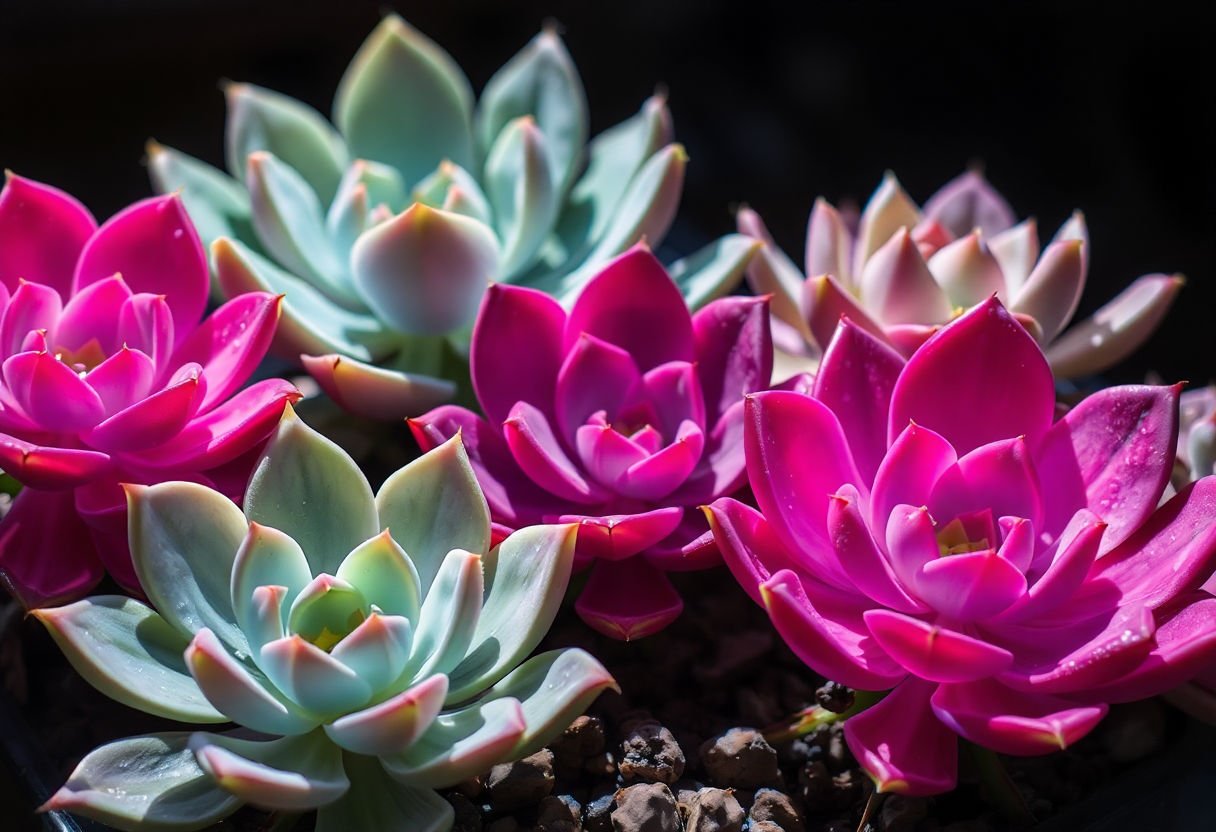
Succulents aren’t just plants. They tell stories with their leaves. Sometimes, those stories speak of struggles with light. These can guide you in giving succulents what they need.
Stretched Growth (Etiolation): When succulents reach for the sun, it means they lack it. Leaves spread apart. Stems grow tall and thin. Like a person stretching for a high shelf.
Color Changes: Pay attention to the colors. Bright green leaves might fade. Or vibrant hues look dull. The leaves might turn pale or yellow. This shows they crave more sunshine.
Leaf Changes: Leaves can change shape. They might curve or bend in strange ways. If leaves become soft or translucent, more light could help.
Slower Growth: Healthy succulents grow at a steady pace. If they’re stuck in slow motion, check the light. Too little slows them down.
Flowering Troubles: Some succulents love to bloom. If they don’t, light is a possible issue. More light means more chances to see those flowers.
Simple Fixes
- Relocate: Move closer to a window with more sun. A good spot can work wonders.
- Rotate: Turn pots every few days. This prevents leaning and ensures even light.
- Supplement: Use grow lights if natural light is too low.
Knowing these signs helps you adjust. Your succulents will thank you with lush growth and bright colors. Listen to what they say, and watch them thrive.
Tailoring Light Conditions for Specialty Succulents
Specialty succulents have unique light needs. They stand out from the crowd, much like a tropical bird in a flock of pigeons. Each has its own demands and characteristics.
Echeveria and Haworthia: These succulents enjoy bright, indirect light. Too much direct sunlight can sunburn their delicate leaves. A spot with gentle morning sun followed by afternoon shade works well.
Lithops: Known as living stones, these prefer full sun to thrive. They need bright light to maintain their vibrant colors. Without it, they can become leggy, losing their compact form.
Gasteria: These favor low to medium light. Like someone who enjoys a soft-lit room over harsh lighting, Gasteria finds too much sun overwhelming. Indirect light from a north-facing window suits it best.
Ariocarpus: These cacti need a blend of sun and shade. Direct morning sun combined with afternoon shade creates the ideal environment. It mimics the conditions of their natural desert habitat.
Here are some tips for providing the right light:
- Rotate pots every few weeks. This prevents uneven growth.
- Use sheer curtains to diffuse intense sunlight. It acts like sunglasses for your plants.
- Consider artificial grow lights if natural light is limited. LED grow lights can supplement during shorter days.
Understand what each type needs. Give them the right conditions, and they will flourish. Their unique beauty makes the effort worthwhile.
Understanding Seasonal Light Changes for Succulents
As the seasons change, so does the light your succulents receive. Spring and summer offer brighter, longer days. Succulents love this extra sunlight and grow strong. But watch out. Too much sun can scorch some types. If leaves turn brown or dry, they might need a break from the intense light.
Autumn arrives with shorter days. Light becomes less intense. Succulents start to slow down. They might need more time in direct sunlight than in summer. You may have to move them to a spot with more light.
Winter can be tricky. Days are short, and sunlight is weak. Some succulents go dormant, like bears in hibernation. They need less water and sunlight. But others still need sunlight. A south-facing window works best now. You can use artificial lights too.
Consider these tips:
- Watch the leaves: Yellow or pale leaves might mean they need more light.
- Move plants as needed: Change spots for more or less light with the seasons.
- Use artificial lights: Useful in winter or cloudy regions.
Understanding these changes helps succulents stay healthy all year. They need your help to adapt to the seasons.
Conclusion
Caring for succulents begins with understanding their light preferences. These plants thrive with the right balance of natural and artificial light. Bright, direct light suits some, while others prefer gentler, low light. Seasonal changes play a role too. Tailoring light conditions ensures long-term growth and success. Embrace these strategies to keep your succulents healthy and vibrant.
Frequently Asked Questions
How much light do succulents need?
Most succulents thrive with plenty of sun. Bright, indirect light often works best for many species. But some need direct sunlight.
Can succulents grow indoors?
Yes, many succulents do well indoors. Low-light varieties are perfect for indoor spaces. Just be sure they get enough natural or artificial light.
What are signs of too much light for succulents?
If you see sunburn on a succulent’s leaves, like browning or crispy edges, it might get too much light. Move it to a spot with less direct sun.
Do all succulents need the same light conditions?
No, different succulents have different light needs. Some thrive in strong sunlight, while others prefer shady areas. Always check your plant’s specific needs.
Can artificial lights help succulents?
Absolutely. Artificial lights support succulents, especially when natural light is lacking. Choose grow lights designed for plant use to ensure enough light.
